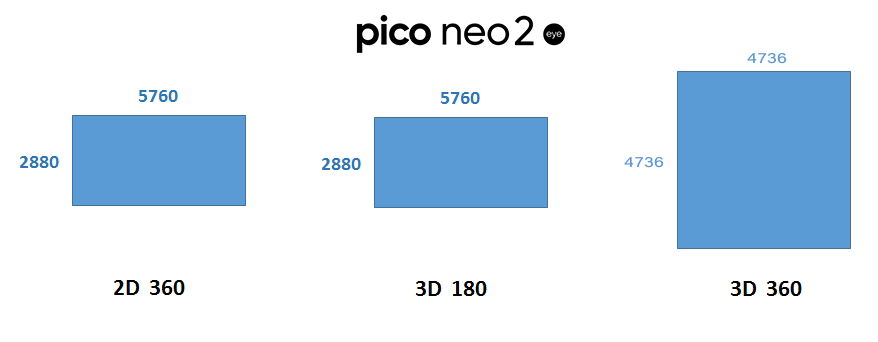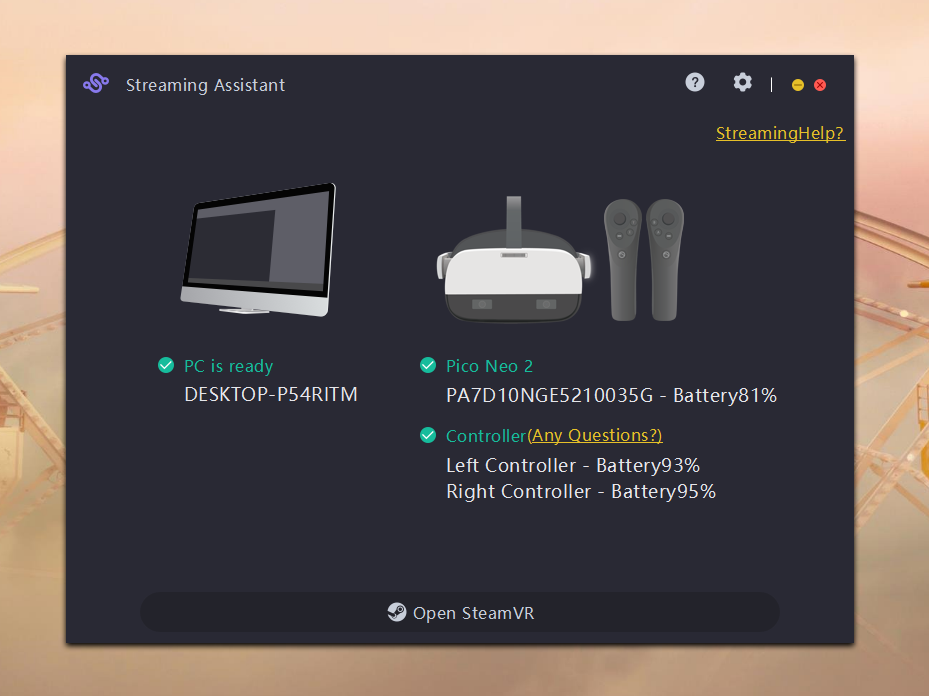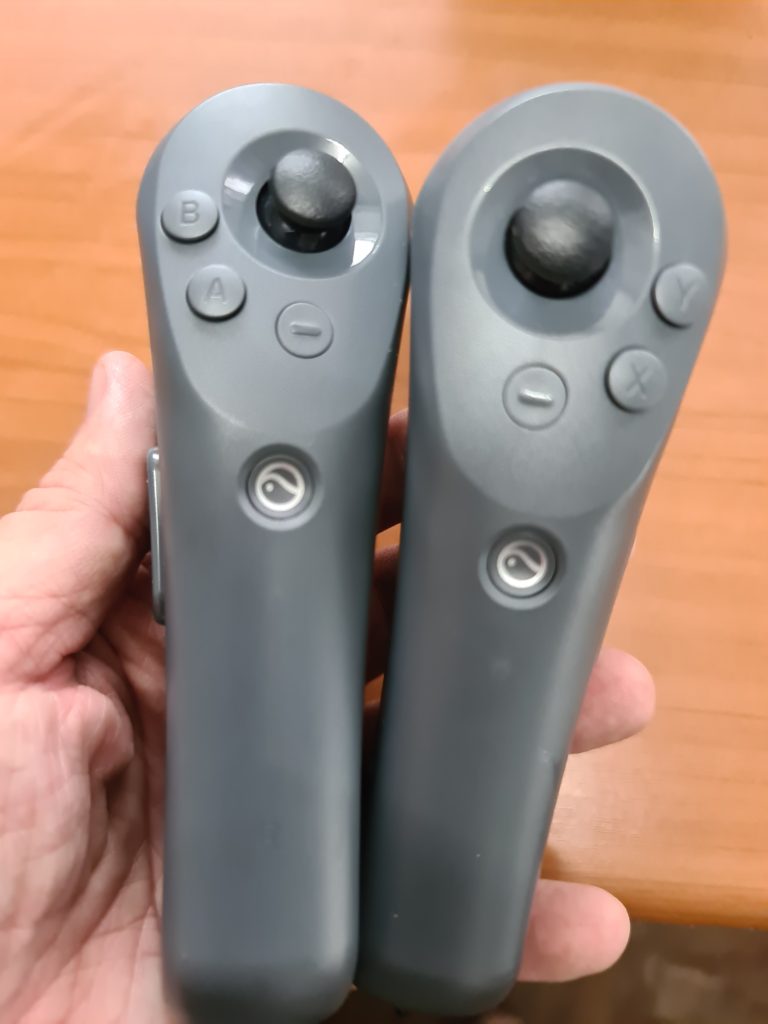I have to continually remind myself that this is an enterprise business tool. But yet everything about it makes me want this as my new favorite VR headset.
I’ve heard it described as the Quest on steroids. I don’t think that’s a good analogy. Being on steroids is an artificial inducement, not natural.
This headset is the product of thoughtful, well-designed expertise on the part of PICO.

The Pico Neo 2 Eye is a new standalone VR headset. It is the powerful successor to the Pico Neo and a good indication for what’s about to come in our future. I’ve been obsessed with VR gear since they first made their debut in the early 1990s, then again when the next-gen stuff came out in the 2010s. It’s been fantastic to see the technology move forward in leaps and bounds since then. I find that with each passing year, there are always a few standout products that significantly raise the bar. I think this is one of them.

With the best in its class 4K resolution, 6 DoF, a Snapdragon 845 processor, Tobii Eye Tracking, built-in 128GB memory and, a 256GB SDcard slot for all the content you could possibly want, the Pico Neo 2 Eye has blown up the VR market!
SPECIFICATIONS
PRODUCT SPECS
| Display | Resolution | 4K resolution |
| Optics | FOV | 101°,Fresnel |
| IPD | 55mm~71mm | |
| Myopia | No adjustment, Wearing glasses | |
| Platform | Qualcomm | SD845 6GB+128GB, MicroSD up to 256GB |
| System/SDK | Android8.1/Pico XR SDK/Qualcomm XR SDK | |
| BT/WIFI | BT 5.0/ 802.11a/b/g/n/ac 2X2 MIMO Dual Antenna | |
| Camera | Environment Cam X 2 | Stereoscopic monochrome 1280*800@120Hz Fisheye FOV:150° |
| Eye Tracking Cam X2 | Both eyes, Monochrome (Neo 2 Eye Only) | |
| Sensor | IMU 9 Axis, Proximity sensor | |
| Audio | Integrated Spatial stereo speaker, Dual Mic EC/NR, 3.5mm Jack | |
| Weight | Weight <340g (Without Headband) |
What Resolution Will Pico Neo 2 Eye Handle?

FEATURE DETAILS
How does it compare to other headsets on the market? Well, I’d say there is one standout competitor that’s similar in its specifications, and that’s the Oculus Quest. When you look at it as a consumer device, yes, the Pico Neo 2 Eye is more expensive ($899 vs. $499), but the Pico Neo 2 Eye is an Enterprise headset designed for business use. If you compare the Pico Neo 2 Eye and the Oculus Quest Enterprise headset, then the Pico is a bargain at $899 versus $1000.

You’re getting 2GB extra RAM, more than 25 percent additional resolution, electromagnetic controller tracking, a built-in SD card slot for an additional 256 GB of storage, and, of course, the eye-tracking.
Speaking of resolution, the Pico Neo 2 Eye matches the Quest for 2D 360 and 3D VR180 at 5.7K, although the Quest recommends 5.2K for both resolutions. When you get to 3D 360, the Pico jumps out ahead with 4.7K versus 4K. With the foveated rendering and the increased resolution of the Pico screens, it is a significant viewing difference in favor of the Pico.
Add to that the RGB-stripe subpixel arrangement, instead of the PenTile arrangement found on other headsets. That makes the Pico Neo 2 Eye the sharpest display on any wireless VR headset.

The Pico Neo 2 has dynamic foveated rendering enabled by Tobii Spotlight Technology™ with a 90Hz output frequency. What does this mean exactly? The headset will fully render the area you’re looking at while reducing the quality of the image in your peripherals. It’s called foveated rendering. It works much the same way your actual eyes work. Here’s a quick experiment for you. Focus on something in front of you and then hold up some writing near the edge of your field of vision. You probably won’t be able to read it. By utilizing a natural effect, this type of rendering allows the headset to offer a better frame rate, higher resolutions, and more complex shading all without an expensive GPU. Eye-tracking requires some calibration, and there are some small glitches once in a while, but for the most part, I have found it very reliable.

The Eye Tracking is from Tobii, the acknowledged world leader in eye-tracking technology. What this means for businesses is that its Eye-tracking offers enhanced mechanics and data gathering, allowing your business to gain key insights into customer behavior, reduce training time, and improve safety and productivity.
The Dynamic foveated rendering powered by Tobii Spotlight Technology increases framerates by up to 66% and reduces GPU shading loads by up to 72%*[1], leading to higher quality visuals and more efficient performance.
It’s one of those smart solutions that I’d say is a total game-changer. By introducing new technology, you’ve now made a system that performs better and is ultimately cheaper for that performance. Foveated rendering also allows the Pico Neo 2 Eye to stream VR content from a VR ready PC. Wirelessly!
As a VR content creator myself, I think wireless VR streaming is likely one of the next big frontiers in entertainment. The ability to pop on a headset and just start immersing yourself means that the barrier to entry to newcomers is being removed.

[1] *Data from benchmark test based on Qualcomm’s Adreno foveation in Spot’s Apartment and conducted on Pico Neo 2 Eye
IPD SETTINGS
The Pico has opted not to put a manual IPD adjustment, and while I understand the idea behind the why, I’m not sure that I 100% agree with it.
The optical design for the lenses can accommodate a wide range of IPD from 55MM to 71MM. Pico called this adaptive, meaning that the overall sweet spot is achievable for people within this range.
The average IPD is around 63 to 64 IPD, so Pico felt confident the range offered by the Neo 2 would be fine for the majority of end-users.
When designing the headset, the team looked at how it was going to be used and by whom. For business use, Pico felt a lot of the clients would have little to no experience in VR, so it wanted to create a headset that was more plug and play so-to-speak, and require minimal setup. This was especially important for headsets being used by a large number of people where a simple process to handle mass use was important, especially in situations were minimal guidance was available.

While this solution might not be perfect for everyone, there is a general issue within the virtual reality industry regarding IPD in that a lot of users don’t understand how it works or what it does and often at times not use it the correct way. This is less of an issue with more experienced users, but again, as much of Pico’s target audience are new to VR, it felt this could be a barrier or point of confusion.
THE DESIGN
The Pico Neo 2 Eye kind of reminds me of a retro gaming console. Dull greys and blacks with rounded squares. While the developers have said that the headset is primarily built for business, I’d still like to see them give it a sleeker look. After all, while I am a businessman myself, I do like me a good VR gaming session.
In the past, after a particularly tenacious level of Beatsaber, I’ve often found myself readjusting my slipping headset. The Pico Neo 2 Eye has done a few interesting things here to solve this comfort issue.
The headset comes with a surprisingly comfortable head strap that can be easily adjusted at the back using a large dial (similar to a good construction hard hat if you’ve ever had to wear one on a building site). This means no annoying Velcro to snag a stray strand of hair. They’ve also placed the battery pack on the back, which balances the headset nicely while distributing the weight for added comfort.
Speaking of the battery, I’ve clocked it in at about 1.5 – 2 hours per charge. Not bad. Not great. But there is a connection for an external battery to supplement the main internal power.

The controllers come with a standard button layout, so you won’t have to figure out how to run everything again from scratch. I’ve found them entirely viable for gaming. As I mentioned before, they also come with electromagnetic tracking. That’s great because it allows the controllers to track without a direct line of site to the instrument. While early forms of electromagnetic tracking had a few deficiencies like being affected by metal and limited range, I haven’t found any of these issues with the Pico Neo 2 Eye.
As for sound, the headset comes with hidden speakers in the Headband as well as a built-in headphone jack (take note smart phones!).
THE STORES: OCULUS VS. PICO
If there is one place that the Pico does not excel over Oculus, it is in the app offerings. Yes, this is an Enterprise unit but even then some may want access to games. Pico has addressed that with it’s own store and the selections are growing but it is a long way from the Oculus Store.
There is another option and that is the Streaming Assistant. With the Streaming Assistant, you can connect to your PC and Steam VR to purchase and play any games or apps that are available there. The streaming can be done wirelessly or wired version is in beta. The process is simple and strat forward. With wireless mode, both devices need to be on the same wifi connection. I tested the wired mode connecting my laptop via a USB-C 3.1 to USB-C 3.1 ports. The connection wasn’t perfect but Pico is working to improve that. I played three games. Alyx, Half-Life, Arizona Sunshine and, Angry Birds: Isle of Pigs. The visuals were good but there was intermittent latency that made it a little rough. It’s not quite there but as I mentioned Pico is working on improving it.

FINAL THOUGHTS
The Pico Neo 2 Eye has undoubtedly raised the bar on what can be expected of VR headsets going forward. While some of the new technologies are still a little rough around the edges sometimes, they’re certainly a welcome improvement.
In general, Pico is aggressive in the VR headset market, and I think that the public will benefit significantly from the competition. Unlike Oculus, they have not walked away from 3DoF Headsets. The G2 is an excellent 3DoF headset, and I am looking forward to testing and reviewing it as well.
I can wholly recommend it as a solid product well worth the investment for whatever you VR needs might be, and I can’t wait to see what the future holds for this technology. Enjoy and watch more VR!

